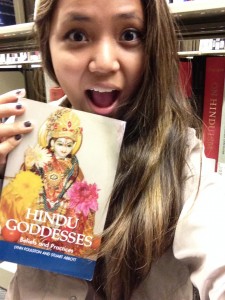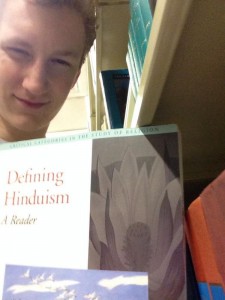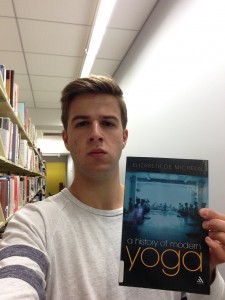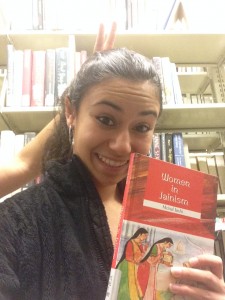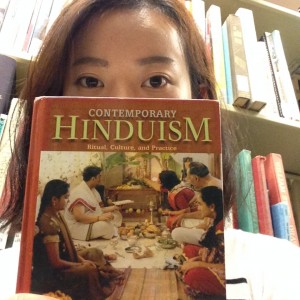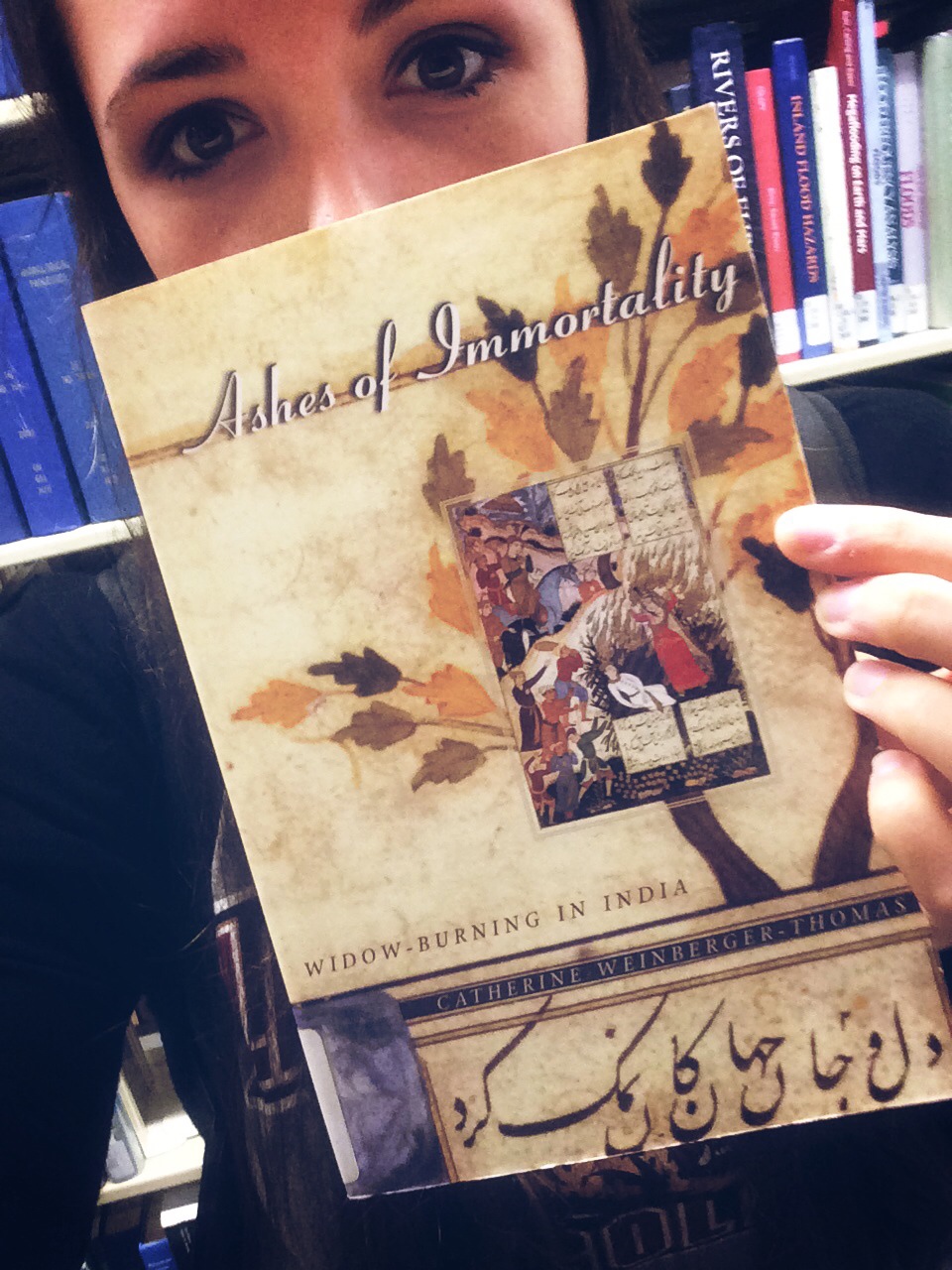Foulston, Lynn, and Abbott, Stuart. Hindu Goddesses: Beliefs and Practices. Sussex Academic Press, 2009
To start my Shelfie assignment, I went on to the Lafayette Library OneSearch and typed in “Hinduism cultures.” I picked this topic because I found it extremely interesting every time we discussed Hindu rituals, such as how they position their body parts when they pray in temples. When I went to the library to retrieve this book, I was disappointed to find out someone already checked it out. So I spent a couple of minutes going through other books in the surrounding area, hoping that one would catch my eyes. And sure enough, I found a colorful book called Hindu Goddesses: Beliefs and Practices. The cover of the book had a picture of one of the Hindu goddesses decorated in flowers, jewelries, gold, and colorful clothing. The more I skimmed through the book, the more I realized how little I knew about Hindu goddesses. They were rarely mentioned in the textbook or in class. Sure, they had a tiny section dedicated to them but it was nowhere near the length of the Hindu gods section. It is even harder to find any detailed accounts of them, like how they are worshipped or their role in society.
This book is divided into two parts with different sections discussing different parts of Hindu goddesses. Part one is on beliefs, and part two is on practices with a little introduction about “Who or what is a Hindu goddess?” at the beginning of the book. In the introduction alone, I learned that some people believe there are “330 million goddesses.” As I look further into the table of contents, I find myself recognizing some goddess names as well as phrases that I remember from the textbook and class discussions, such as “Sri-Laksmi” and “Sakti.” I also discovered four pages, double-sided colored pictures, which really grabbed my attention. These pictures are of different shrines and temples associated with the Hindu goddesses, which I find helpful in understanding how important their presence is in the Hindu cultures. Even though this book appears to be an easy and fun read on the outside, the content is pretty heavy. I could not understand the full meaning of most of the random pages I flipped. I would have to have a deeper understanding of Hinduism as a whole.
While searching for a new book after losing my first choice, I did not find that many interesting books near Hindu Goddesses: Beliefs and Practices. The books surrounding it were also about Hinduism and Religions in India but most of their cover pages lacked pictures or colors, which made it hard for me to even look at them. A few of the books that I picked up discussed Hinduism as a whole, not its different parts. The most common names were “Introduction to Hinduism.” All in all, I was very satisfied with finding this book even though I had a different book in mind to start this assignment.
